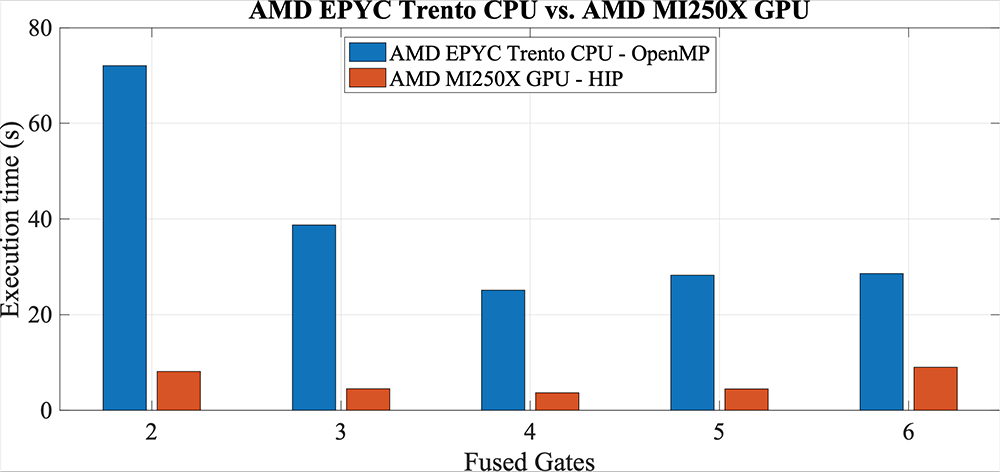Porting a Quantum Computer Simulator to AMD GPUs on Dardel
Stefano Markidis, PDC
Quantum computing is an important and emerging technology that solves problems beyond the reach of classical computers. Its applications are growing from cryptography to quantum chemistry simulations and machine learning. Quantum computer simulators have become essential tools for designing, validating, and optimising quantum hardware, software, and algorithms. Among the various quantum computing simulation techniques, the state vector simulator is particularly significant for quantum algorithm development. It represents the quantum state of a system as a complex vector, enabling continuous inspection and monitoring during circuit execution. As quantum computing simulation techniques evolve, the need for high-performance quantum computer simulators that are capable of leveraging high-performance computing (HPC) systems has intensified.
GPUs are an important HPC technology as they provide significant acceleration in quantum computer simulations and often outperform CPUs by over 40 times. While it is possible to run quantum computer simulations on NVIDIA GPUs, thanks to tools like “cuQuantum” (which is based on NVIDIA’s CUDA interface that makes it possible for software to use particular types of GPUs for general-purpose computing), there has been a notable absence of similar support for AMD GPUs. This is a critical gap, especially given that many of the world’s leading supercomputers (including Dardel at PDC, Frontier at the Oak Ridge Leadership Computing Facility in the USA, and LUMI at the CSC – IT Center for Science in Finland) are equipped with multiple AMD GPUs per node.
To address this gap, the challenge of porting the Google “qsim” quantum computer simulator to utilise AMD GPUs, particularly for the Dardel supercomputer, has been undertaken. By developing a “qsim” backend that leverages the AMD HIP (Heterogeneous-Compute Interface for Portability) programming interface and tools, the aim is to extend qsim’s capabilities to include AMD GPU execution. The work bridges the gap for AMD GPU support in quantum simulations and includes a comprehensive performance evaluation comparing the AMD GPU backend with the existing NVIDIA GPU backend. This development is a significant step towards enhancing the versatility and performance of quantum computer simulators on supercomputers based on AMD GPUs, such as Dardel. More details about this work can be found in “Enabling Quantum Computer Simulations on AMD GPUs: a HIP Backend for Google's qsim” at doi.org/10.1145/3624062.3624223.

